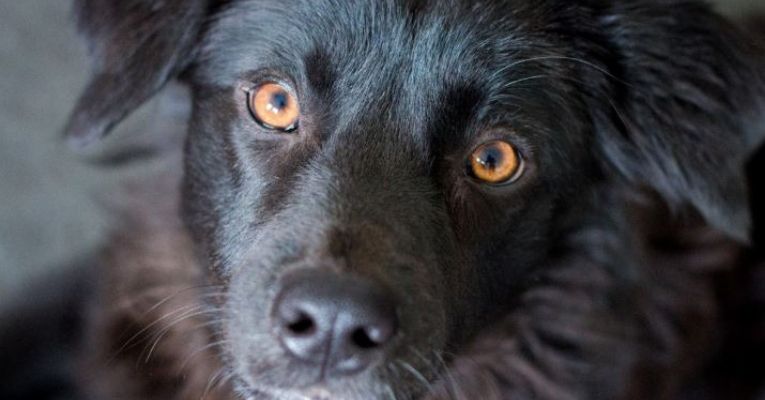Animals
Science Has Finally Explained Why Dogs Have ‘Puppy Dog Eyes’
Dogs evolved “infant-like eyes” to “create the illusion of human-like communication.”

(TMU) — Have you ever looked deep into the emotive, sad eyes of a dog and felt a profound sense of empathy? It turns out “puppy dog eyes” may just be evolution’s ingenious way of tugging at your heartstrings and manipulating you to the benefit of a dog, according to a recent study published by peer-reviewed U.S. scientific journal PNAS.
Researchers have discovered that through the historic process of domestication, dogs managed to develop specific facial muscles around their eyes which allow them to raise the inner part of their eyebrow in a manner that gives them “infant-like” eyes. That evolutionary step during domestication literally altered dogs’ anatomy to allow them to emotionally bond with humans and “create the illusion of human-like communication.”
Researchers at the University of Portsmouth compared the anatomy and behavior of dogs. The popular pet was first domesticated from wolves 33,000 years ago.
However, while wolves and dogs have a strikingly similar facial musculature, the area above the eyes differs. Unlike wolves and the ancient Siberian husky, dogs have a solid muscular structure surrounding their eyes versus the wolves’ “irregular cluster of fibers.”
The researchers say the muscle movement around the brow of the dog triggers nurturing responses in humans because it makes the eyes seem larger, similar to an infant child or a person who may be sad.
Professor Bridget Waller of the University of Portsmouth noted that the findings reveal “how important faces can be in capturing our attention, and how powerful facial expression can be in social interaction.”
The team of researchers from the U.S. and the U.K. compared the facial anatomy of four wild wolves and six domestic dogs, as well as a behavioral analysis of nine wolves and 27 dogs from shelters.
Psychologist Juliane Kaminski, who led the team, said:
“The evidence is compelling that dogs developed a muscle to raise the inner eyebrow after they were domesticated from wolves.
The findings suggest that expressive eyebrows in dogs may be a result of humans’ unconscious preferences that influenced selection during domestication.
When dogs make the movement, it seems to elicit a strong desire in humans to look after them. This would give dogs that move their eyebrows more a selection advantage over others and reinforce the ‘puppy dog eyes’ trait for future generations.”
The facial change was a result of thousands of years of the domesticated canine living alongside humans.
In evolutionary term, these changes happened “remarkably fast” and are likely “directly linked to dogs’ enhanced social interaction with humans,” according to Professor Anne Burrows of Duquesne University in Pittsburgh, Pennsylvania.
Previous research by the scientists involved in the study had already determined that dogs move their eyebrows much more when humans are looking at them.
In future studies, Kaminski plans to examine a wider variety of dog breeds, including ancient breeds like the Siberian husky and street dogs, to better understand the specific details of how and why dogs’ facial musculature evolved.
But what remains clear is that dogs may indeed, and scientifically, be man’s best friend—a fact that is due in no small part to our intertwined history over tens of thousands of years.
By Elias Marat | Creative Commons | TheMindUnleashed.com
Typos, corrections and/or news tips? Email us at Contact@TheMindUnleashed.com
